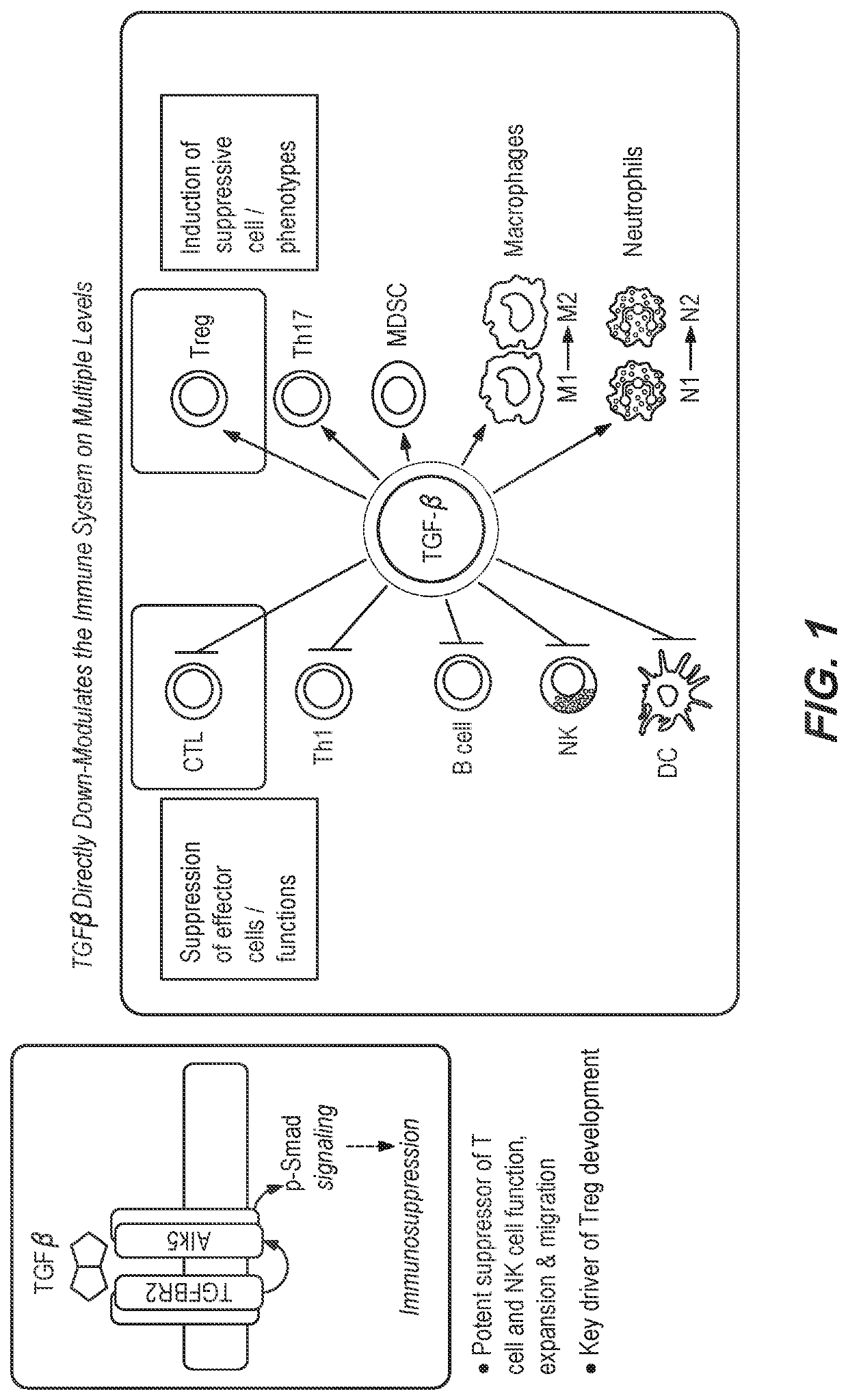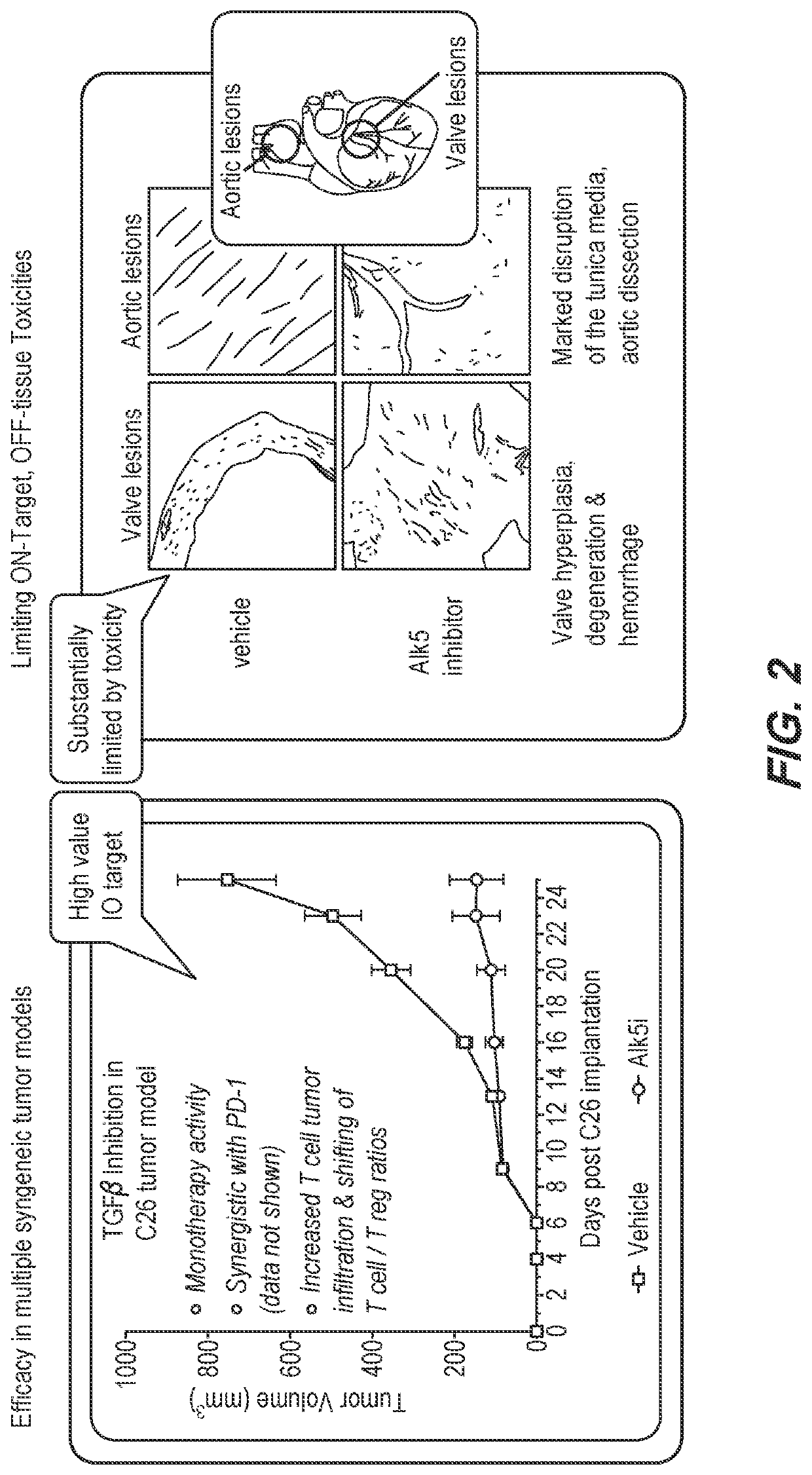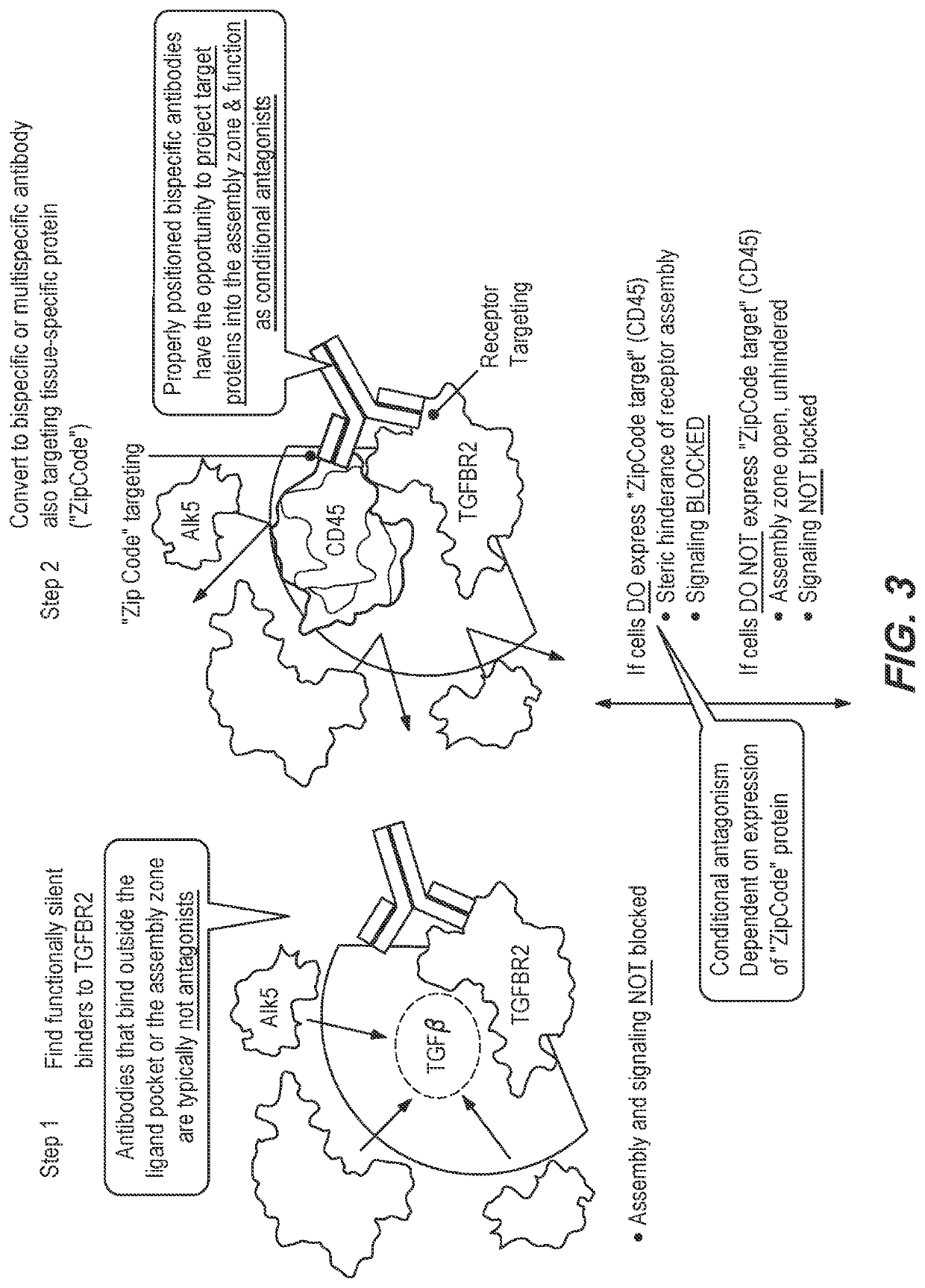Method of using a bispecific antibody to conditionally inhibit a receptor signaling complex
antibody technology, applied in the field of bispecific antibody to conditionally inhibit a receptor signaling complex, to achieve the effects of avoiding unwanted toxicities, selective inhibition of pd-1 signaling, and avoiding autoimmunity
- Summary
- Abstract
- Description
- Claims
- Application Information
AI Technical Summary
Benefits of technology
Problems solved by technology
Method used
Image
Examples
example 8
H. TGF-betaR2 Antibody Generation and Characterization
[0178]Mice were immunized with recombinant human TGF-betaR2 protein and after assessment of positive serology, hybridomas were generated, grown to sufficient quantities, and their supernatants tested by ELISA for specific binding to TGF-beta R2 and not control Fc protein (FIG. 15). Clones that were positively corroborated to specifically bind TGF-bR2 and not Fc control protein, were sequenced and their HC and LC positively identified. Following the sequencing we corresponding genes were synthesized and cloned into mammalian expression vectors for protein production purposes. The resulting expression plasmids were transiently transfected HEK293 cell (FreeStyle) for full length antibody production. Each protein construct was generated as a human chimera, containing the mouse heavy and light chain variable regions as recombinant fusions to respective human heavy and light chain constant regions. The resulting proteins were purified...
PUM
| Property | Measurement | Unit |
|---|---|---|
| molecular weight | aaaaa | aaaaa |
| molecular weight | aaaaa | aaaaa |
| time | aaaaa | aaaaa |
Abstract
Description
Claims
Application Information
 Login to View More
Login to View More - R&D
- Intellectual Property
- Life Sciences
- Materials
- Tech Scout
- Unparalleled Data Quality
- Higher Quality Content
- 60% Fewer Hallucinations
Browse by: Latest US Patents, China's latest patents, Technical Efficacy Thesaurus, Application Domain, Technology Topic, Popular Technical Reports.
© 2025 PatSnap. All rights reserved.Legal|Privacy policy|Modern Slavery Act Transparency Statement|Sitemap|About US| Contact US: help@patsnap.com



